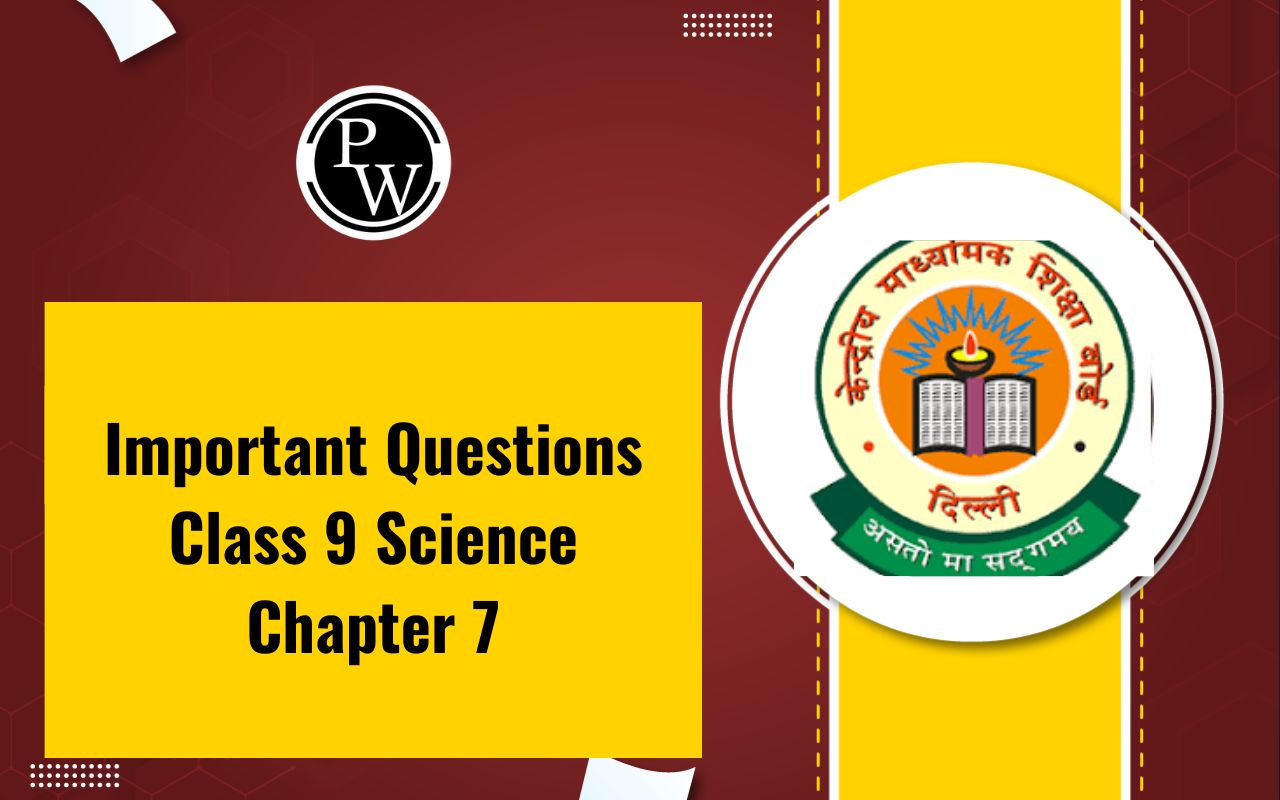

RD Sharma Solutions Class 9 Maths Chapter 9: In RD Sharma Class 9 Solutions, students can find comprehensive answers to all their questions about triangles. These solutions are not only useful for clearing doubts but also for regular practice, leading to high marks in exams.
Chapter 9 of RD Sharma Solutions for Class 9 - Triangle and Its Angles, covers three exercises, all solved by Physics Wallah subject experts. In this chapter, students learn about triangles, which are plane figures formed by three non-parallel lines in a plane. A triangle, a 2D geometrical figure, consists of three edges and three vertices. Triangles have three angles formed by their sides, and the sum of all internal angles is always 180 degrees. Triangles are categorized based on their angles: Acute Triangle, Right Angle Triangle, and Obtuse Triangle. For a deeper understanding of these concepts, students can download the solutions in PDF format whenever they need. These solutions are designed in accordance with the latest CBSE syllabus, catering to the varying intelligence levels of students.CBSE Class 9 Science Syllabus 2024-25
RD Sharma Solutions Class 9 Maths Chapter 9 PDF
You can download the PDF for RD Sharma Solutions Class 9 Maths Chapter 9 - Triangle and Its Angles by clicking the link below. This PDF contains solutions to help you understand triangles better and do well in your math studies. Whether you're having trouble with triangle concepts or want to improve your skills, this resource will guide you through each step.RD Sharma Solutions Class 9 Maths Chapter 9 PDF
RD Sharma Solutions Class 9 Maths Chapter 9 Triangle and Its Angles
Solutions for RD Sharma Class 9 Maths Chapter 9, covering Triangle and Its Angles, are presented below. These solutions aim to clarify concepts and assist students in understanding the topic thoroughly. With step-by-step explanations, students can tackle problems with ease and enhance their mathematical skills.CBSE Class 10 Result 2024 Expected To Be Out Soon
RD Sharma Solutions Class 9 Maths Chapter 9 Triangle and Its Angles Exercise 9.1 Page No: 9.9
Question 1: In a ΔABC, if ∠A = 55 0 , ∠B = 40 0 , find ∠C.
Solution:
Given: ∠A = 55 0 , ∠B = 40 0 We know, sum of all angles of a triangle is 180 0 ∠A + ∠B + ∠C = 180 0 55 0 + 40 0 + ∠C=180 0 95 0 + ∠C = 180 0 ∠C = 180 0 − 95 0 ∠C = 85 0Question 2: If the angles of a triangle are in the ratio 1:2:3, determine three angles.
Solution:
Angles of a triangle are in the ratio 1:2:3 (Given) Let the angles be x, 2x, 3x Sum of all angles of triangles = 180 0 x + 2x + 3x = 180 0 6x = 180 0 x = 180 0 /6 x = 30 0 Answer: x = 30 0 2x = 2(30) 0 = 60 0 3x = 3(30) 0 = 90 0Question 3: The angles of a triangle are (x − 40) 0 , (x − 20) 0 and (1/2 x − 10) 0 . Find the value of x.
Solution:
The angles of a triangle are (x − 40) 0 , (x − 20) 0 and (1/2 x − 10) 0 Sum of all angles of triangle = 180 0 (x − 40) 0 + (x − 20) 0 + (1/2 x − 10) 0 = 180 0 5/2 x – 70 0 = 1800 5/2 x = 180 0 + 70 0 5x = 2(250) 0 x = 500 0 /5 x = 100 0Question 4: The angles of a triangle are arranged in ascending order of magnitude. If the difference between two consecutive angles is 10 0 , find the three angles.
Solution:
The difference between two consecutive angles is 10 0 (given) Let x, x + 10 0 , x + 20 0 be the consecutive angles x + x + 10 0 + x + 20 0 = 180 0 3x + 30 0 = 180 0 3x = 180 0 – 30 0 3x = 150 0 or x = 50 0 Again, x + 10 0 = 50 0 + 10 0 = 60 0 x+20 0 = 50 0 + 20 0 = 70 0 Answer: Three angles are 50 0 ,60 0 and 70 0 .Question 5: Two angles of a triangle are equal and the third angle is greater than each of those angles by 30 0 . Determine all the angles of the triangle.
Solution:
Two angles of a triangle are equal and the third angle is greater than each of those angles by 30 0 . (Given) Let x, x, x + 30 0 be the angles of a triangle. Sum of all angles in a triangle = 180 0 x + x + x + 30 0 = 180 0 3x + 30 0 = 180 0 3x = 150 0 or x = 50 0 And x + 30 0 = 50 0 + 30 0 = 80 0 Answer: Three angles are 50 0 , 50 0 and 80 0 .Question 6: If one angle of a triangle is equal to the sum of the other two, show that the triangle is a right angle triangle.
Solution:
One angle of a triangle is equal to the sum of the other two angles (given) To Prove: One of the angles is 90 0 Let x, y and z are three angles of a triangle, where z = x + y …(1) Sum of all angles of a triangle = 180 0 x + y + z = 180 0 z + z = 180 0 (Using equation (1)) 2z = 180 0 z = 90 0 (Proved) Therefore, triangle is a right angled triangle.RD Sharma Solutions Class 9 Maths Chapter 9 Triangle and Its Angles Exercise 9.2 Page No: 9.18
Question 1: The exterior angles, obtained on producing the base of a triangle both ways are 104 0 and 136 0 . Find all the angles of the triangle.
Solution:
 ∠ACD = ∠ABC + ∠BAC [Exterior angle property]
Find ∠ABC:
∠ABC + ∠ABE = 180
0
[Linear pair]
∠ABC + 136
0
= 180
0
∠ABC = 44
0
Find ∠ACB:
∠ACB + ∠ACD = 180
0
[Linear pair]
∠ACB + 104
0
= 180
0
∠ACB = 76
0
Now,
Sum of all angles of a triangle = 180
0
∠A + 44
0
+ 76
0
= 180
0
∠A = 180
0
− 44
0
−76
0
∠ A = 60
0
Answer:
Angles of a triangle are ∠ A = 60
0
, ∠B = 44
0
and ∠C = 76
0
∠ACD = ∠ABC + ∠BAC [Exterior angle property]
Find ∠ABC:
∠ABC + ∠ABE = 180
0
[Linear pair]
∠ABC + 136
0
= 180
0
∠ABC = 44
0
Find ∠ACB:
∠ACB + ∠ACD = 180
0
[Linear pair]
∠ACB + 104
0
= 180
0
∠ACB = 76
0
Now,
Sum of all angles of a triangle = 180
0
∠A + 44
0
+ 76
0
= 180
0
∠A = 180
0
− 44
0
−76
0
∠ A = 60
0
Answer:
Angles of a triangle are ∠ A = 60
0
, ∠B = 44
0
and ∠C = 76
0
Question 2: In a △ABC, the internal bisectors of ∠B and ∠C meet at P and the external bisectors of ∠B and ∠C meet at Q. Prove that ∠BPC + ∠BQC = 180 0 .
Solution :
In triangle ABC, BP and CP are internal bisector of ∠B and ∠C respectively => External ∠B = 180 o – ∠B BQ and CQ are external bisector of ∠B and ∠C respectively. => External ∠C = 180 o – ∠C In triangle BPC, ∠BPC + 1/2∠B + 1/2∠C = 180 o ∠BPC = 180 o – 1/2(∠B + ∠C) …. (1) In triangle BQC, ∠BQC + 1/2(180 o – ∠B) + 1/2(180 o – ∠C) = 180 o ∠BQC + 180 o – 1/2(∠B + ∠C) = 180 o ∠BPC + ∠BQC = 180 o [Using (1)] Hence Proved.Question 3: In figure, the sides BC, CA and AB of a △ABC have been produced to D, E and F respectively. If ∠ACD = 105 0 and ∠EAF = 45 0 , find all the angles of the △ABC.

Solution:
∠BAC = ∠EAF = 45 0 [Vertically opposite angles] ∠ACD = 180 0 – 105 0 = 75 0 [Linear pair] ∠ABC = 105 0 – 45 0 = 60 0 [Exterior angle property]Question 4: Compute the value of x in each of the following figures:
(i)

Solution:
∠BAC = 180 0 – 120 0 = 60 0 [Linear pair] ∠ACB = 180 0 – 112 0 = 68 0 [Linear pair] Sum of all angles of a triangle = 180 0 x = 180 0 − ∠BAC − ∠ACB = 180 0 − 60 0 − 68 0 = 52 0 Answer: x = 52 0(ii)

Solution:
∠ABC = 180 0 – 120 0 = 60 0 [Linear pair] ∠ACB = 180 0 – 110 0 = 70 0 [Linear pair] Sum of all angles of a triangle = 180 0 x = ∠BAC = 180 0 − ∠ABC − ∠ACB = 180 0 – 60 0 – 70 0 = 50 0 Answer: x = 50 0(iii)

Solution:
∠BAE = ∠EDC = 52 0 [Alternate angles] Sum of all angles of a triangle = 180 0 x = 180 0 – 40 0 – 52 0 = 180 0 − 92 0 = 88 0 Answer: x = 88 0(iv)

Solution:
CD is produced to meet AB at E. ∠BEC = 180
0
– 45
0
– 50
0
= 85
0
[Sum of all angles of a triangle = 180
0
]
∠AEC = 180
0
– 85
0
= 95
0
[Linear Pair]
Now, x = 95
0
+ 35
0
= 130
0
[Exterior angle Property]
Answer:
x = 130
0
∠BEC = 180
0
– 45
0
– 50
0
= 85
0
[Sum of all angles of a triangle = 180
0
]
∠AEC = 180
0
– 85
0
= 95
0
[Linear Pair]
Now, x = 95
0
+ 35
0
= 130
0
[Exterior angle Property]
Answer:
x = 130
0
Question 5: In figure, AB divides ∠DAC in the ratio 1 : 3 and AB = DB. Determine the value of x.

Solution :
Question 1: Define a triangle.
Solution: A triangle is a shape with three sides and three corners, called vertices. Its key property is that when you add up all the angles inside the triangle, the total is always 180 degrees.
Question 2: Write the sum of the angles of an obtuse triangle.
Solution: The sum of angles of obtuse triangle = 180°.
Question 3: In △ABC, if ∠B = 60 0 , ∠C = 80 0 and the bisectors of angles ∠ABC and ∠ACB meet at point O, then find the measure of ∠BOC.
Solution :
∠B = 60 0 , ∠C = 80 0 (given) As per question: ∠OBC = 60 0 /2 = 30 0 and ∠OCB = 80 0 /2 = 40 0 In triangle BOC, ∠OBC + ∠OCB + ∠BOC = 180 0 [Sum of angles of a triangle = 180 0 ] 30 0 + 40 0 + ∠BOC = 180 0 ∠BOC = 110 0Question 4: If the angles of a triangle are in the ratio 2:1:3, then find the measure of smallest angle.
Solution :
Let angles of a triangles are 2x, x and 3x, where x is the smallest angle. To find: measure of x. As, Sum of angles of a triangle = 180 0 2x + x + 3x = 180 0 6x = 180 0 x = 30 0 . AnswerQuestion 5: If the angles A, B and C of △ABC satisfy the relation B – A = C – B, then find the measure of ∠B.
Solution:
Sum of angles of a triangle = 180 0 A + B + C = 180 0 …(1) B – A = C – B …(Given) 2B = C + A …(2) (1) => 2B + B = 180 0 3B =180 0 Or B = 60 0| CBSE Class 9 Maths Syllabus | CBSE Class 9 Science Syllabus |
| CBSE Class 9 Computer Application Syllabus | CBSE Class 9 Social Science Syllabus |
RD Sharma Class 9 Solutions Maths Chapter 9 FAQs
What topics are covered in RD Sharma Class 9 Maths Chapter 9?
How can RD Sharma Solutions for Chapter 9 help me understand Triangle and Its Angles better?
How should I use RD Sharma Solutions effectively for Chapter 9?
Do RD Sharma Solutions for Chapter 9 include explanations for theorems and proofs related to Triangle and Its Angles?












